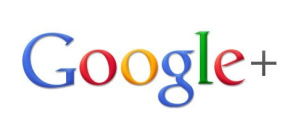Google+ and the walled garden deathmatch
 Last week there was distant thunder on Facebook’s blue horizon. A new social network is being trialled by Google, called Google+. For the moment it’s only available to invited test users. I’ve apparently been deemed worthy. Is this what the Rapture will be like? Fire and brimstone, or an email from Mountain View California?
Last week there was distant thunder on Facebook’s blue horizon. A new social network is being trialled by Google, called Google+. For the moment it’s only available to invited test users. I’ve apparently been deemed worthy. Is this what the Rapture will be like? Fire and brimstone, or an email from Mountain View California?
First impressions are… impressive. The interface is clean, fast, and there are small innovations that might make it worth shifting from Zuckerberg’s panopticon at some critical mass in the future. A full first-glance review by Wired’s Ryan Singel is available here. It doesn’t strike me as that different from Facebook (if you exclude the sparsely-populated feeling of a nightclub at about 7pm). Yet I feel there’s something much bigger at play here. It’s a deathmatch involving the world’s social tech giants – each leveraging the life out of their consumer data in order to seize a captive audience for their own particular ecosystem. It began with the salesman’s rhetoric of web 2.0 articulated by Tim O’Reilly, and ends with a Web characterised by the acreage of its walled gardens.
Back in 2003 publisher Tim O’Reilly announced a new kind of Web called Web 2.0: a place where ordinary users would take control from the big corporations – where personal wikis, blogs and social networks would replace monolithic corporate websites that dictated what we should buy, read and think. It was now our content that mattered – and the powerful had to listen. Time Magazine famously claimed that: “It’s about the many wresting power from the few and helping one another for nothing.”
Lofty stuff. Yet O’Reilly’s original manifesto for Web 2.0 reveals a less utopian view of the new social power balance. A key O’Reilly principle was that data, and not hardware, was now the “Intel Inside.” This referred to the ubiquitous PC-age advertising slogan – but meant that whereas computing power had traditionally been based on hardware controlled by a monolithic tech giant, it was now content that mattered – user data – and whoever owned that content, could monetise it. This wasn’t Time Magazine’s utopia – Web 2.0 was a new way to make money.
Google got this before most. Their search engine became a cash monster that leveraged the world’s accumulated query data to refine targeted advertising. And they didn’t stop there. Gmail, YouTube, and an ecosystem of services were tightly integrated to turn a user’s data into Google’s personal data mine. The things we choose to share in Google’s primary-coloured playground provide a marketable intelligence that only Google can exploit. It’s a walled garden of data.
Yet Google dropped the ball in one crucial respect. Social networks. Try as they might, Google couldn’t deliver a successful rival to Facebook or Twitter. And this matters. Facebook has half a billion users. All happily trading exploitable data inside an enclosed social world that Google must ask permission to access. For a company that thinks little of driving around the neighbourhoods of the world with its own street camera, this hurts.
So Google+ is Google’s fourth attempt at social networking, after Orkut, Wave and Buzz. Judging by early reactions, it may finally have built a worthy challenger. Yet one thing becomes clear as you use it. Google+ grabs your whole Google identity – Gmail, Calendar, Documents – and puts it in a single menu bar at the top of your Web browser window, visible whenever you use a Google service. It’s a neatly integrated world of work, leisure and lifestyle. But it’s a purely Google world. A walled garden. Google wants to make every aspect of your online experience so seamless that you’ll eventually transfer your precious data from the Facebook monolith to theirs.
In the BBC series ‘The Virtual Revolution’, Aleks Krotoski made an astute observation about the Web. Despite the utopian promise of perfect consumer choice and a level playing field for myriad businesses, today’s Internet essentially has only one bookshop (Amazon), one record shop (iTunes), one marketplace (eBay), one search engine (Google) and one social network (Facebook). The truth is, we like our Web neatly divided into singular walled gardens. And we are willing to give our precious data to whoever makes the prettiest garden. So while the rhetoric of the social network is to empower the user with well-designed and tightly integrated social tools, the reality is to turn the user into a cash cow that can be milked for the content they produce. The clever trick is to make the garden so large and the grass so green that we forget the walls are there, and we don’t notice the milking.
The thunder we hear is not Facebook and Google fighting to make a better social world for the user. It’s the sound of two landowners fighting over cattle.
Last two lines are absolute killers. Nail it entirely.
Lovely article and absolutely spot on, Steve. I have a question though: what would facebook cattle (or even sheep?) look like?
George,
I think Farmville is probably a good guide 😉